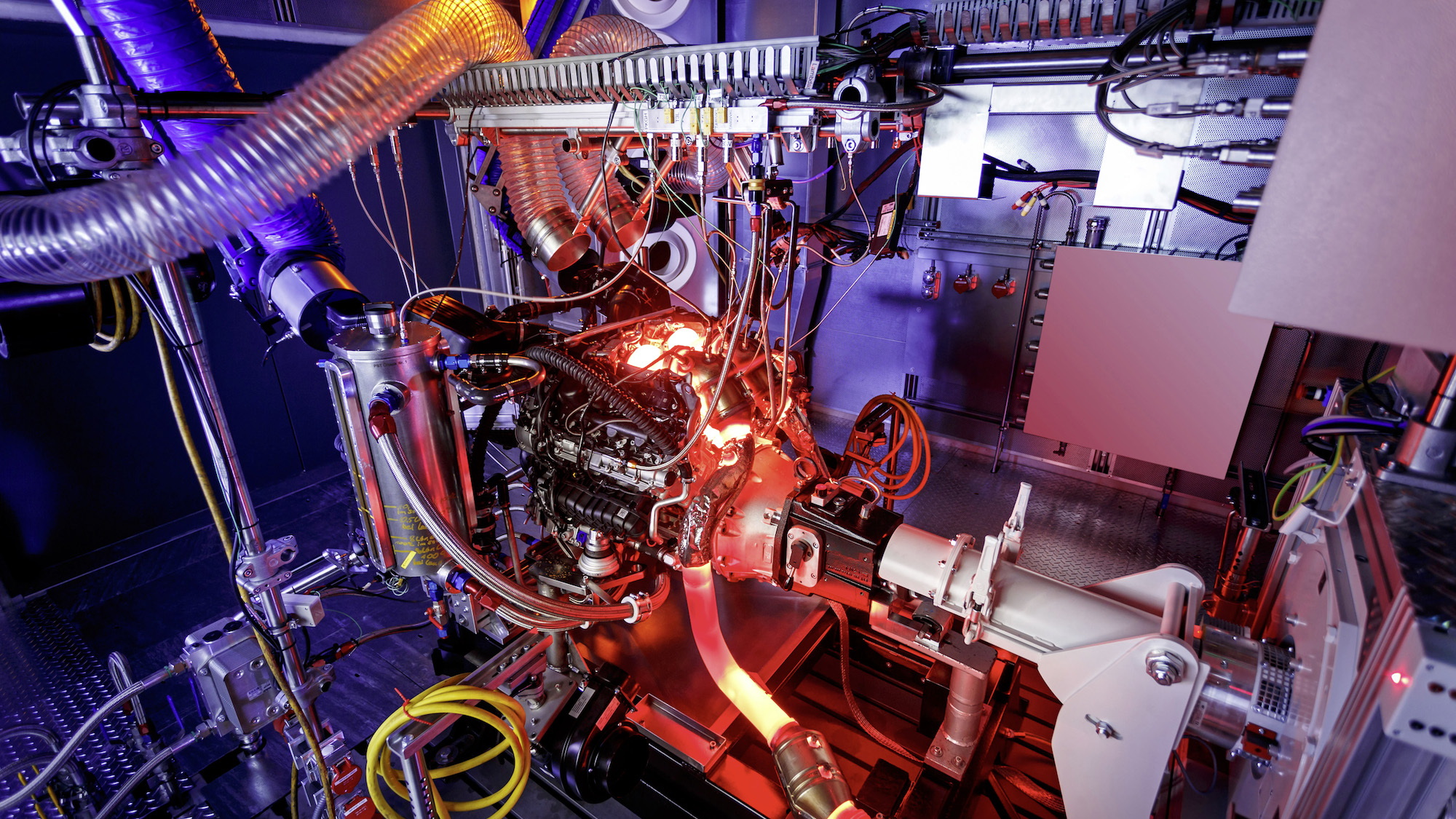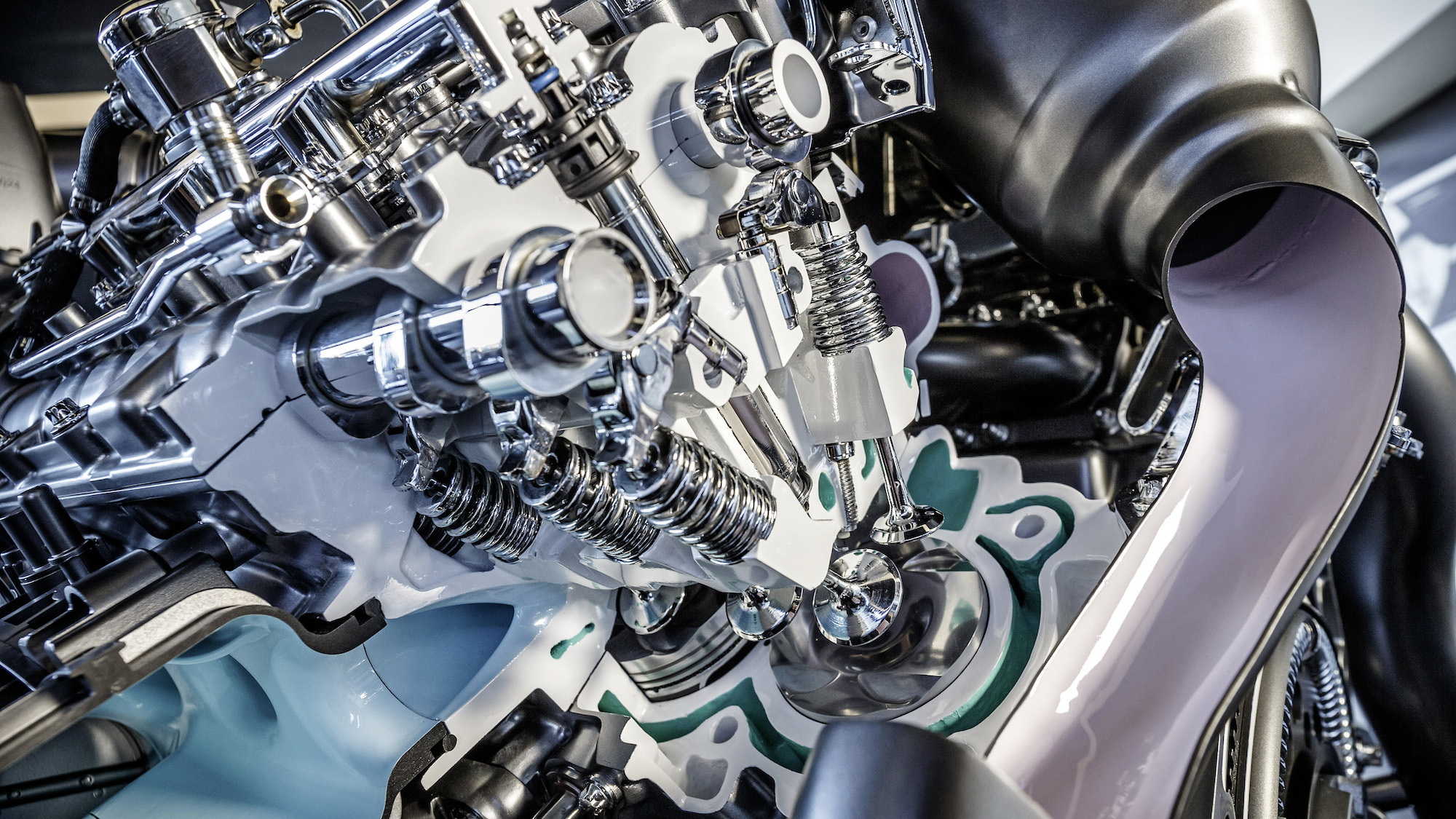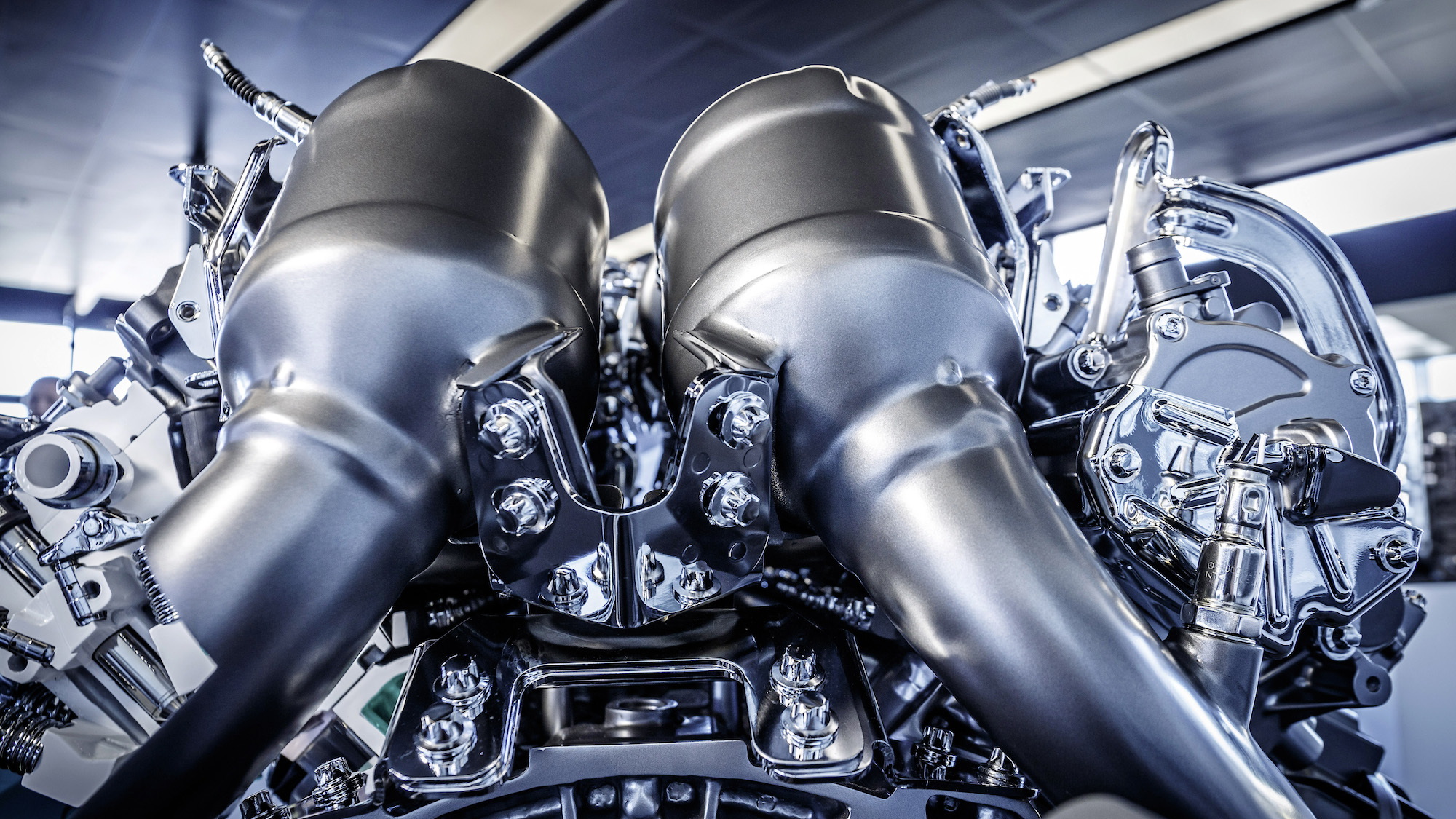MUST WATCH: 5,000-HP, 348-MPH Devel Sixteen Spotted In The Wild: Video
Displacing just 4.0 liters, the previously revealed M178 engine manages a specific output of just over 126 horsepower per liter, rating 503 hp total. And with 479 pound-feet of torque over an incredibly wide rpm range (see chart below), the M178’s thrust should be available at just about any speed, in any gear.
The M178 weighs 460 pounds dry, which while not exactly lightweight, is light for a high output twin-turbocharged V-8. Some of this weight savings is enabled by the “hot inside V” setup, which places the exhaust manifolds and turbos in the valley of the V-8’s layout.
Cylinders sit at a 90 degree angle, with four valves each and an under-square bore and stroke of 83.0 x 92.0 mm. Despite running 17.4 psi of boost pressure, the M178 sports a 10.5:1 compression ratio. Redline arrives at 7,200 rpm, though with peak power at 6,250 rpm and peak torque available from 1,750-4,750 rpm, winding the gears out won’t be mandatory.
ALSO SEE: New Toyota Supra Powertrain Details Emerge
Dry sump lubrication improves high lateral acceleration oiling, and lets the M178 sit as low as possible in the AMG GT’s chassis, improving the center of gravity. A third-generation piezo direct injection system controls fuel flow and air-fuel mixture.

Mercedes-AMG M178 twin-turbo V-8 engine
The new M178 also shares some technology with Mercedes-AMG’s dominant Formula 1 turbo V-6 engine—although the technology flow is the reverse of what you might expect. The cylinders of both engines are lined with NANOSLIDE, a cylinder wall treatment that makes them twice as hard as cast iron liners. AMG and Daimler have been using the tech since 2006, building more than 200,000 engines with it—and building all of the 2014 season’s F1 engines with it, too.
Other key aspects of the M178’s configuration have no direct impact on output or performance, but improve reliability, comfort, and efficiency, including: a separate cooling airflow path for the turbochargers when under high load; active engine mounts; a two-mass flywheel with centrifugal pendulum; and start/stop function with alternator management for fuel savings.
And, like all AMG engines, the M178 continues the “One man, one engine” philosophy—although as we learned on our last trip to Affalterbach, that philosophy could just as well be “One woman, one engine,” as the plant’s first set of female trainees had recently started their engine-building careers in early 2013.
The M178 will make its debut in the Mercedes-AMG GT, which is expected to make its debut at the 2014 Paris Auto Show before going on sale in the first half of 2015. Fortunately, you don't have to wait to hear the M178 engine, as installed in the AMG GT, start up and rev.

Mercedes-AMG M178 twin-turbo V-8 engine






